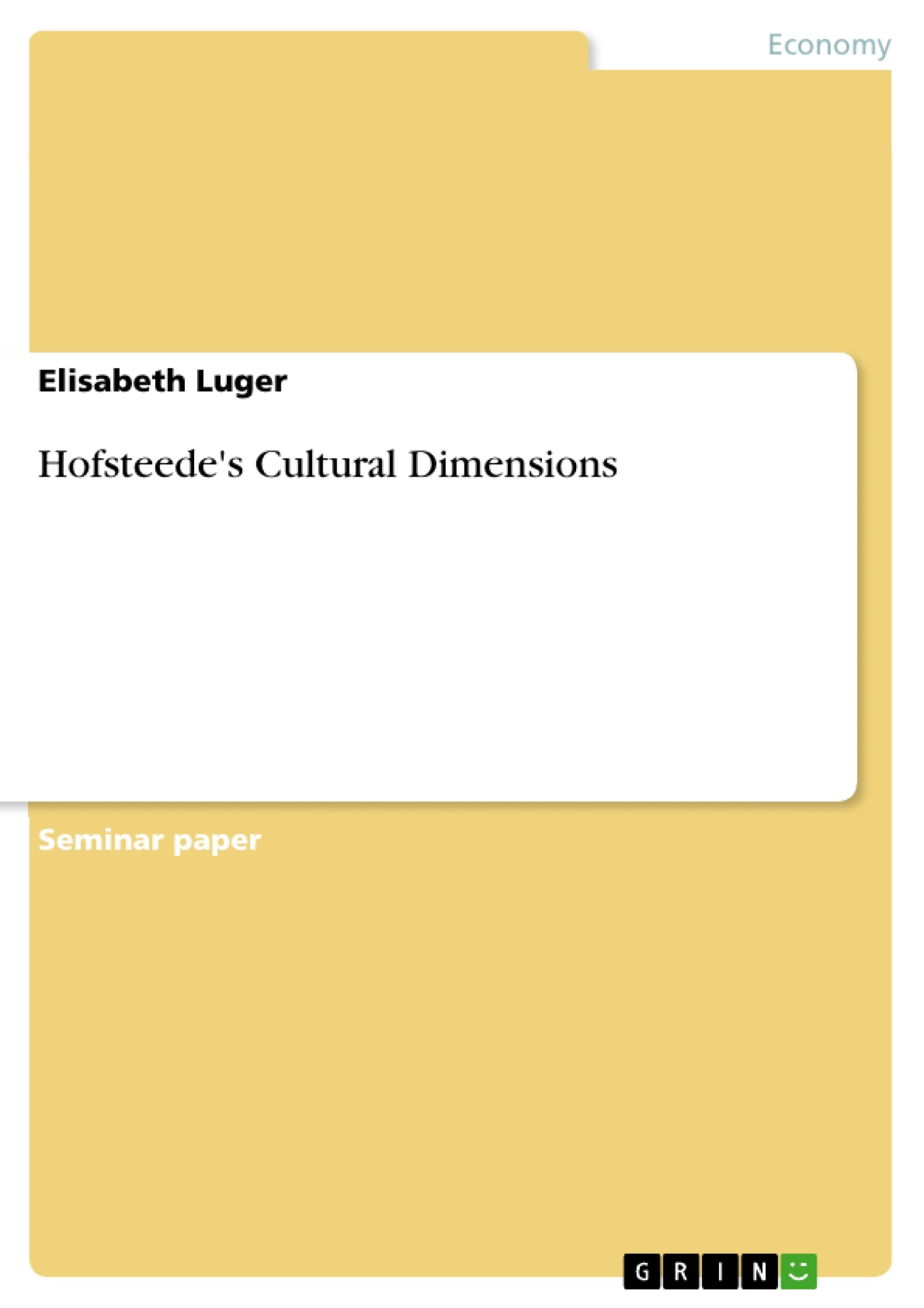In the globalising world where multinational organisations work across borders the question of cultural differences and mutual understanding seems to be highly relevant and has been discussed by many researches in the last decades. National culture can be viewed as the norms, values and beliefs shared by individuals from a particular nation that distinguish it from other nations (Nový I., Schroll-Machl S. et al. (2001): Interkulturální komunikace v rízení a podnikání). Our cultural environment is natural for us but people from other cultures may not be comfortable with it or may not understand. The behaviors that are consistent with the norms of one culture may violate the norms of another like for example: the time that the German account executive expects the Mexican manager to arrive at their 12:30 lunch appointment is 12:30. When the Mexican manager agreed on 12:30, he didn′t know that she would be annoyed by him not arriving or calling before 1:00 (http://tbs-intranet.tees.ac.uk/international/ccd/ccd_block2.htm ,19. 6. 2002).
Therefore when we talk about differences between cultures, then we are speaking in generalities. Therefore we should be aware of expectations that every idividual will behave in a manner consistent with those generalizations, because even within cultures, people differ from each other. Why do we study national culture anyway? The study of human behavior and the practice of leadership and management continually require the use of generalizations. It is still worth to search for models that predict human behavior, even if those predictions can′t always be accurate. Some of the most popular models are Hofstede′s Theory and the model of Trompenaars.
Inhaltsverzeichnis (Table of Contents)
- Introduction
- Trompenaars's seven Dimensions of Culture
- Universalism vs. Particularism
- Individualism vs. Communitarianism
- Specific vs. Diffuse Cultures
- Affective vs. Neutral Cultures
- Achievement vs. Ascription
- Sequentional vs. Sychronic
- Internal vs. External Control
- Hofstede's five Cultural Dimensions
- Conclusion
Zielsetzung und Themenschwerpunkte (Objectives and Key Themes)
This paper explores the complexities of cultural differences in a globalized world, focusing on the work of prominent researchers Trompenaars and Hofstede. It examines how cultural dimensions influence individual behavior, communication, and business practices, highlighting the importance of cultural understanding in international collaborations.
- Cultural Dimensions and their Impact on Behavior
- Trompenaars's Seven Dimensions of Culture
- Hofstede's Five Cultural Dimensions
- Cultural Differences in Business Negotiations and Communication
- The Importance of Cultural Awareness in a Globalized World
Zusammenfassung der Kapitel (Chapter Summaries)
- Introduction: This chapter sets the stage by discussing the increasing relevance of cultural differences in today's interconnected world, emphasizing the need for understanding diverse cultural norms and values. It introduces the frameworks of Trompenaars and Hofstede as key tools for navigating cultural complexities.
- Trompenaars's Seven Dimensions of Culture: This chapter dives into Trompenaars's model, exploring each of his seven cultural dimensions in detail. It provides examples and comparisons of how different cultures approach each dimension, illustrating the impact of these variations on communication, decision-making, and relationships.
- Hofstede's five Cultural Dimensions: This chapter focuses on Hofstede's influential framework, examining his five dimensions of culture. It discusses the cultural differences in each dimension, exploring their implications for international business, teamwork, and intercultural communication.
Schlüsselwörter (Keywords)
This paper focuses on the concepts of cultural dimensions, intercultural management, Trompenaars's model, Hofstede's model, universalism, particularism, individualism, collectivism, specific cultures, diffuse cultures, affective cultures, neutral cultures, achievement cultures, ascription cultures, sequential cultures, synchronic cultures, internal control, external control, and cultural awareness in a globalized world.
- Citation du texte
- Elisabeth Luger (Auteur), 2002, Hofsteede's Cultural Dimensions, Munich, GRIN Verlag, https://www.grin.com/document/14038



